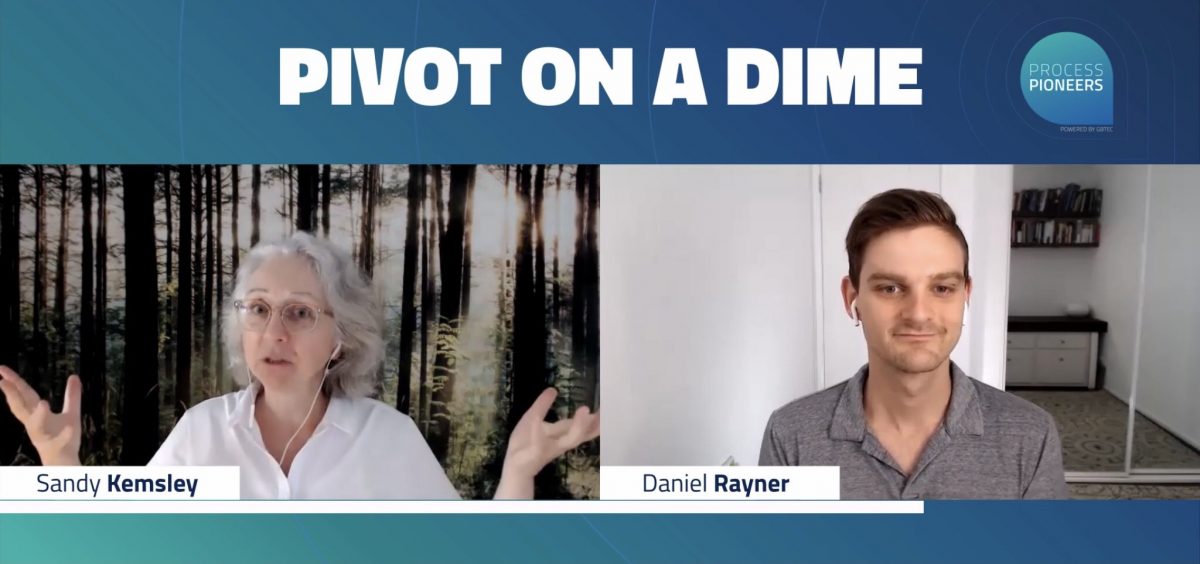Rich Phillips, the COO of Maritz Travel, was up next to talk about creating consistency and customer value through IT. Although not a part of his presentation, he opened with a great thought about the importance of people in the process: “If you don’t think about the people, you’re not going to get the change.”
His central topic is about BPM: he sees it not just as a different class of software or a different way to manage, but as a breakthrough tool for transforming a business. In a post-9/11 world, they found their business changed drastically, due to shifting customer requirements, supply and demand issues, and regulatory compliance. Instead of just logistics management, they need to expand their systems to cover a number of other key factors, such as compliance management and data management. They undertook some strategic analysis and value stream analysis, and chose Lombardi BPM as a way to achieve some of the benefits that they were targetting. Phillips feels that it provides benefits in the area of reuse of existing systems and processes (through end-to-end process orchestration of existing services) as well as permitting collaborative development involving business, IT and the customer, and enforcing business rules as part of the process. It’s also provided an easier-to-learn user interface, allowing for user training in days instead of months — critical when they need to quickly ramp up for a spike in business.
He talked about a key issue that I see in many companies: the business is motivated to provide what the customer used to want, not what they want now. They’ve expanded their focus on logistics management to provide a more complete suite of services to their customer.
Another issue is that the business tended to abdicate their responsibility for stating what they need to IT, so IT had to just make some guesses about it (which never works out all that well). Now, much like Connie Moore’s earlier comments on how business and IT need to be blended, not aligned, Phillips said much the same thing about breaking down the barriers between business and IT.
Critical success factors that he identified:
- Business leadership commitment
- Strategic roadmap: 2-3 years of future view, but with small-enough iterative steps
- Process definition through mapping
- Alignment to and support of value proposition
- Measures of success, macro and micro
- Iterative refinement
- Continuous improvement
- Agile development
- Embedded process ownership throughout the business areas
He pointed out that they did their first BPM project in 90 days after signing the contract with Lombardi, in contrast to the 2- to 4-year development cycle that they used to have. I’ve seen equally fast implementations with other BPM vendors; in many cases, the key is not the specific BPMS, but the approach that’s taken to implementing it.
The results have been pretty amazing: reversals of their declining revenues, margins and productivity figures, and ability to fine-tune the business process control through the business rules embedded within the process (he didn’t mention another BRE, so I assume that he means the rules functionality within Lombardi). Obviously, a big part of this is the strategic and value chain planning that they’ve done, but BPM is definitely a contributor to their success. They’re now looking at correlating process results to the hard ROI numbers in their business results, such as cycle time, cost per transaction, etc.; this will help them to decide where to focus their efforts in the future.
He went on to discuss a transformation framework, first listing “big bang re-engineering” and “fixing pockets of processes” as flawed approaches. In the big bang approach, it’s mostly a problem in that people can’t make that degree of change without it being massively disruptive to the business; in the subprocesses approach, it’s not enough to make a significant difference. Like the story of the three bears, you have to find that middle approach that’s just right.
Now in their sights for future development is what he calls the real power of BPM: expanding the envelope of the process-managed domain to include revenue generation opportunities, not just cost reduction and productivity opportunities. Although productivity and ROI are important, the C-level executives are usually much more focussed on growth and revenue generation, so it’s critical to look at product development and product/solution delivery processes as well as risk and compliance processes.

